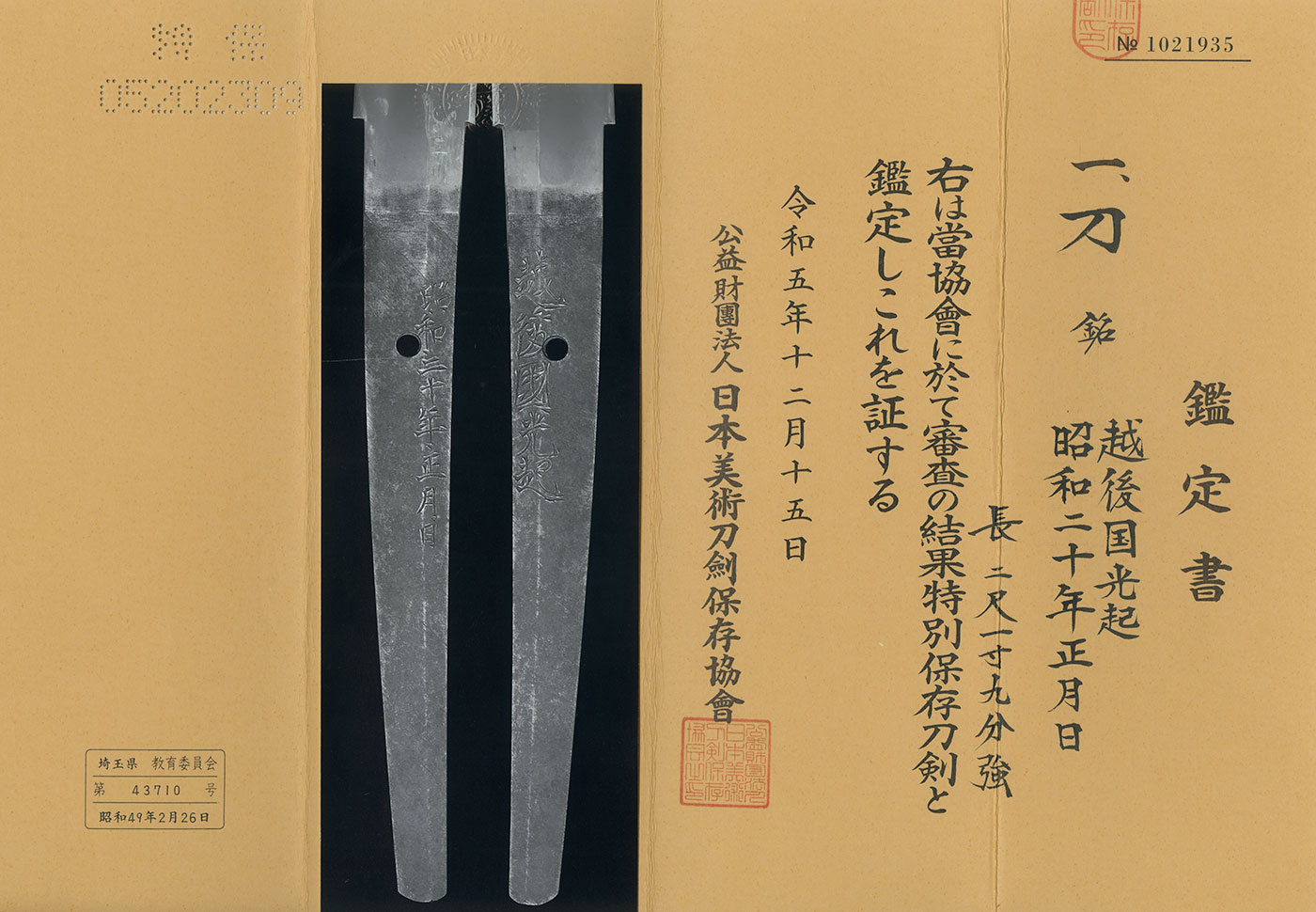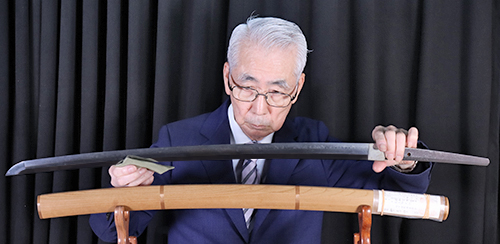Orderin number:24221
Katana in Shirasaya (NBTHK Tokubetsu Hozon Token)
Signature: Echigo Kuni Mitsuoki
Showa 20 Nen Shogatsu Hi (January 1945)
越後国光起
昭和二十年正月日
We categorize swordsmiths' works as Saijyo Saku, Jyojyo Saku, Jyo Saku, and Regular Saku based on their craftsmanship. This piece is ranked as Jyo Saku among works by Echigo Kuni Mitsuoki.
Habaki: Single-layered silver
Blade Length: 66.4 cm (26.14 in)
Curvature: 1.6 cm (0.63 in)
Mekugi Hole: 1
Width at Base: 3.22 cm (1.27 in)
Width at Tip: 2.31 cm (0.91 in)
Thickness: 0.79 cm (0.31 in)
Sword Weight: 840 grams (1.85 lbs)
Era: Showa 20 (January 1945)
Shape: This piece has a wide blade with substantial thickness and a slightly deeper curvature, featuring an extended tip and a well-balanced appearance.
Jigane: This sword displays a tightly forged ko-itame hada with a clean, smooth appearance.
Hamon: The hamon consists of fine nioi with a mix of gunome-midare and choji-midare patterns, with well-defined ashi and a large rounded boshi.
Features: This katana was created near the end of the war when the Japanese people held heartfelt prayers for victory. It is believed that Mitsuoki from Echigo also shared this sentiment, crafting this sword with a spirit of devotion in January 1945.
Aoi Art’s Comment: This swordsmith, born in Niigata Prefecture, is renowned as a mukansa smith. After graduating from elementary school, he studied sword-making independently. In Showa 10 (1935), he joined the Nihonto Tanren Denshujo, established by Kurihara Hikosaburo. After the war, he resumed forging once sword production was permitted again, dedicating himself to his craft and winning many awards, including four Tokusen, two Yushu Tokusen, the Gold Medal, and the President's Award. He achieved mukansa status in 1981 (Showa 56). This piece is considered one of Echigo Kuni Mitsuoki's finest works.
NBTHK Tokubetsu Hozon Token
Aoi Art Estimation Paper
Whole Oshigata
Price:850,000JPY
Order Form
Related Items:
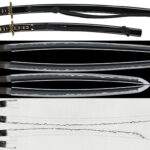 Dai Sho : Motohira(Dai Sho:NBTHK Tokubetsu Hozon Token)(Daisho Koshirae: NBTHK Tokubetsu Hozon Tosogu)
Dai Sho : Motohira(Dai Sho:NBTHK Tokubetsu Hozon Token)(Daisho Koshirae: NBTHK Tokubetsu Hozon Tosogu)
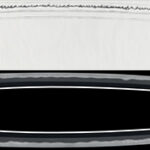 Katana: Seitan Ryuoji Minamoto Sadatsugu (NBTHK Tokubetsu Hozon Token)
Katana: Seitan Ryuoji Minamoto Sadatsugu (NBTHK Tokubetsu Hozon Token)
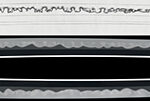 Katana:Echigo no Kami Kanesada(NBTHK Tokubetsu Hozon Token)
Katana:Echigo no Kami Kanesada(NBTHK Tokubetsu Hozon Token)
 Katana:Echigo no Kami Kanesada (Second Generation) (Sakakura Gon no Shin Terukane)(NBTHK Tokubetsu Hozon Token)
Katana:Echigo no Kami Kanesada (Second Generation) (Sakakura Gon no Shin Terukane)(NBTHK Tokubetsu Hozon Token)
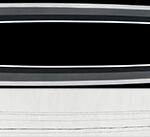 Tachi: Sagami Koku Ju Masuda Yasuaki Saku (December 1971)(NBTHK Hozon Token)
Tachi: Sagami Koku Ju Masuda Yasuaki Saku (December 1971)(NBTHK Hozon Token)
 Daisho:Tame Minobe Akihide Shi Chikushu Sanno Ju Sotsutomu Saku Showa 60 Nen 8 Gatsu Kichijitsu (August 1985)(NBTHK Hozon Token)
Daisho:Tame Minobe Akihide Shi Chikushu Sanno Ju Sotsutomu Saku Showa 60 Nen 8 Gatsu Kichijitsu (August 1985)(NBTHK Hozon Token)



